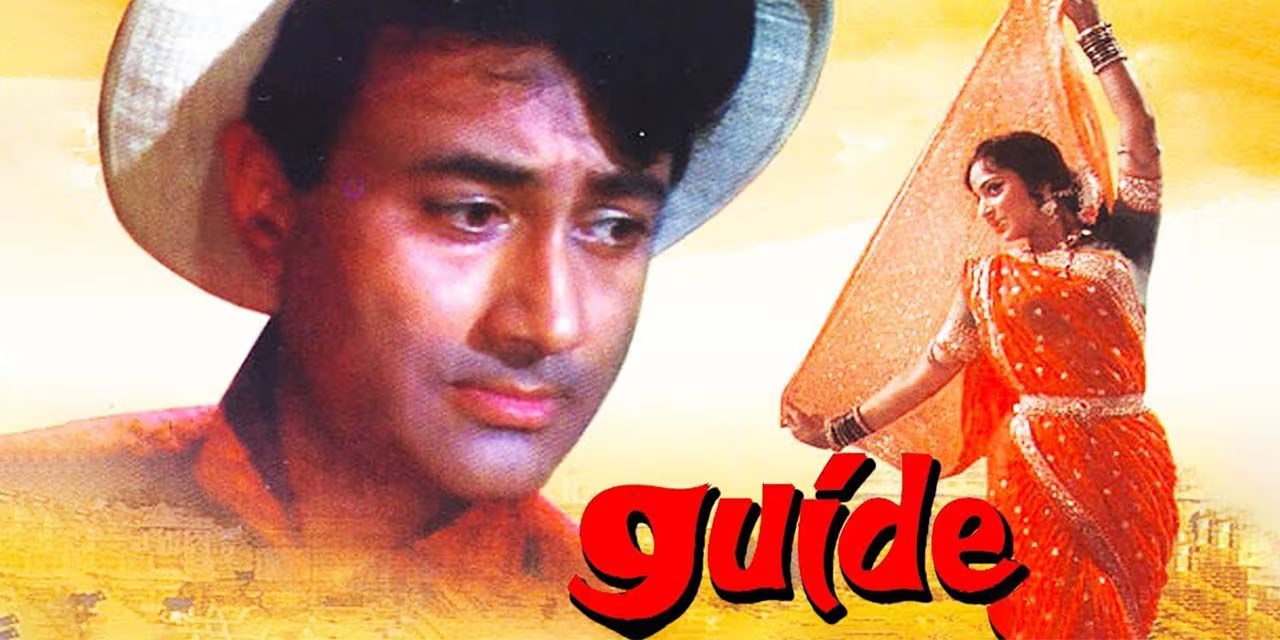I love different types of posters – my college wall is a testament to that. I have spent ages carefully curating what hangs on my wall, I have seen many posters, using the best digital nuances, illustrations and typography, but never have I seen anything that has shaken me this much.
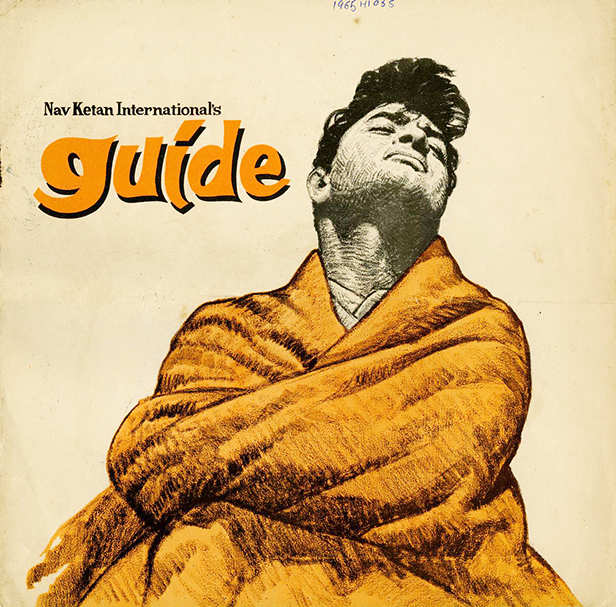
It’s a simple poster, to be sure, but it is something I will carry with me for a very long time. It’s just a man, draped in saffron (the colour worn by ‘sadhus’ and not something co-opted by the BJP) with a face contorted in angst.
A man torn between two sides of himself, not sure which one to listen to; the one he’s known his entire life who wants him to go back to something he’s comfortable with, and the one he’s just started to find, who questions everything, transforming him into someone he never intended on being.
I came across Guide on a day when a combination of anxiety and depression crippled me to the point where I had to call my mother 21 times before I was even ready to get out of bed. Call it sheer luck that I found this movie, but Guide was exactly what I needed.
Guide is the story of Raju – a tour guide. A prince of his streets, dethroned overnight for standing strong against a judgmental society – he stood by the one he loved and fought his family, his friends and everyone and everything he knew. Their love and belief in each other brought them to a place where they were respected and appreciated by the world. As is wont in stories of love, there were setbacks and Raju’s passion led to his downfall and incarceration.
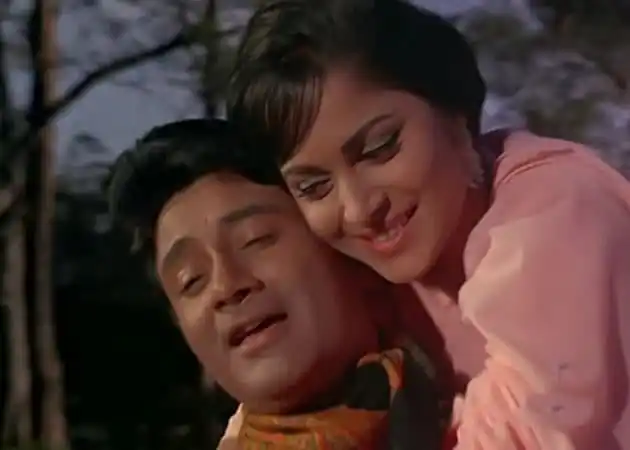
Now a disgraced man, he let go of everything he knew to start a new life, only to find himself on a path he had least anticipated. Mistaken for a sadhu, he began to teach his simplistic teachings to the world, imparting knowledge he felt everyone should have, only to be put on a pedestal even he knew he did not deserve.
A human, treated like a God, who believed in neither.

A victim of miscommunication, Raju is forced by some villagers to undertake 12 days of fasting as penance to end a drought. And therein lies the true soul of the movie.
Everything he had lost in his previous life was coming back to him – his family, his love and his friends. But he wanted none of it now.
The villagers believe in him and he begins to believe their faith in him which makes him ready to give up everything. Caught between his mind and soul, he is no longer concerned by whether it will rain or not, or whether he will survive his penance or not, but rather, by whether the villagers’ faith will be rewarded or not.
Whether there is a God or not.
In his own words, if there is no God, then there is no point in living blindly in a world devoid of light; but, if there is, then he wanted to know just how far he had to push before a God would listen to his prayers. An Indian spin on Pascal’s wager, if you will.
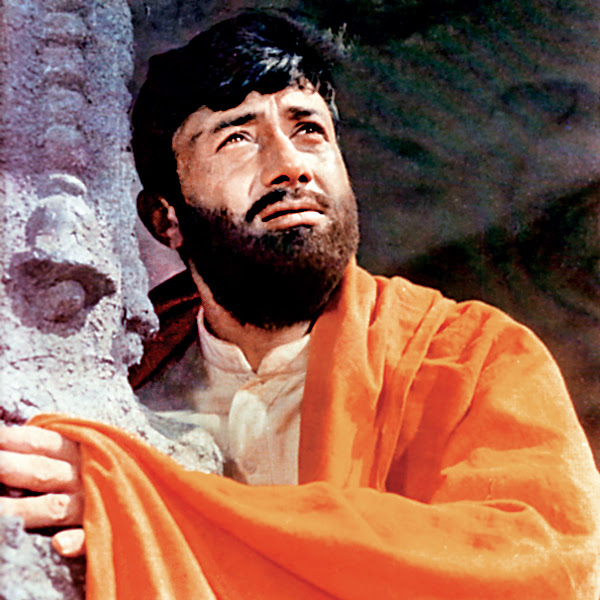
His spiritual conflict culminates with Manna De’s soulful “He Ram, Hamare Ram Chandra”, as his soul faces his ego one last time. He finally surrenders his ego and travels towards enlightenment, even as it begins to rain.
While I am not one to buy into superstition and talks of God, the spiritual crisis the protagonist experienced was quite similar to what I went through – maybe that is why I identified so much with this story. Raju’s journey embodies the philosophies presented in the Bhagvad Gita, as well as those explored by the likes of Sartre, Nietzche, Descartes, Plato and Socrates. I personally like to see his enlightenment as him simply letting go of his attachments, illusions and ego to reach his undiluted “self” as he begins to transcend towards peace and harmony.
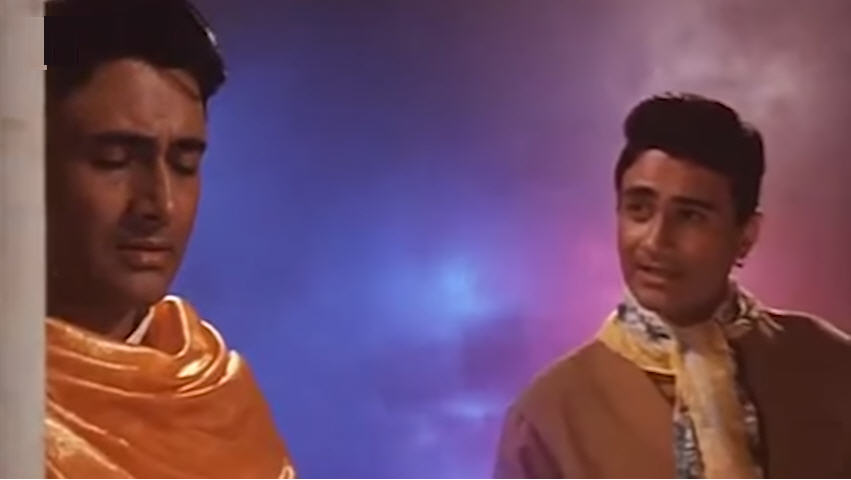
Guide runs at a whooping 2 hours and 50 minutes – it is very long. But, the viewer does not realize it because of how well the story is told. S.D. Burman’s music elevates this story to an entirely different level.
The first and latter halves of the movie are two different beasts unto themselves – so distinct, and yet woven together in an impeccable fashion. Each character is fleshed out exceptionally well.
Not only that, Guide proved that in the male-dominated film industry, ideas of feminism and women’s liberation can shine and receive widespread recognition if handled sensitively and logically, something even today’s industry fails to do.
Guide is a path-breaker, which has aged very well. It has something for everyone who watches it, and should, most certainly be watched.
-Anant Shri
